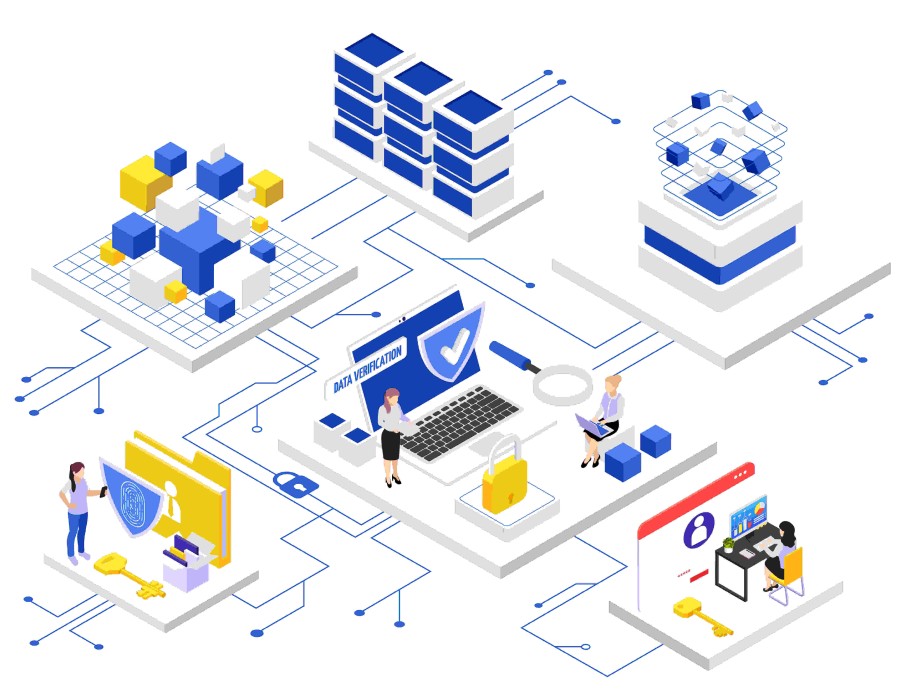Many organizations struggle to understand the end-to-end EDI 834 services along with the best practices needed to maximize their value. This blog aims to provide a clear and simple step-by-step guide to the EDI 834 process from start to finish.
Overview of the EDI 834 process
The EDI 834 process refers to the steps involved in electronically exchanging member enrollment data using HIPAA 834 transactions. At a high level, the EDI 834 process typically involves the following:
- The sender first collects enrollment information from sources which includes member demographics and coverage details.
- Next, the sender creates 834 files from the collected enrollment data in the required HIPAA format.
- The sender then performs validation checks on the Edi 834 files to ensure accuracy, completeness, and compliance with HIPAA requirements.
- The validated 834 files are then transmitted to the intended receiver via secure channels like FTP or EDI 834 process.
- The receiver then processes the received EDI 834 files by extracting member records, mapping data to their internal fields, translating them to the native format, and loading them into their enrollment systems.
- Regular reconciliation and auditing are performed by trading partners to identify and resolve any mismatches in membership data, ensuring end-to-end data accuracy throughout the EDI 834 process.
Benefits of using the EDI 834 process in the healthcare industry
The use of the EDI 834 process, including HIPAA-compliant EDI 834 transactions offers several key benefits to the healthcare industry:
- Data Accuracy
- Faster Transactions
- Lower Costs
- Higher Efficiency
- Interoperability
- Compliance
- Better Patient Care
Key stakeholders involved in the EDI 834 process
Several key stakeholders are involved in exchanging member enrollment data using EDI 834 process transactions.
- Health plans use 834 transactions to receive eligibility updates from employers, providers, and government programs.
- Employers send 834 transactions to health plans to ensure correct premium billing and deductions for employees.
- Providers rely on 834 information from health plans and patients to verify eligibility and coverage before rendering services.
- Government programs like Medicare and Medicaid exchange 834 data with health plans and employers to facilitate proper beneficiary enrollment and reimbursement.
- EDI solution providers act as intermediaries by processing 834 transactions between entities that lack direct connectivity.
- Pharmacy benefit managers use 834 transactions to maintain correct membership rosters for administering prescription drug benefits.
Steps involved in the EDI 834 processes
Gathering Enrollment Data: The first step in the 834 EDI process is for the sender to accurately gather all required member enrollment data. This data provides the required information to create healthcare EDI transactions.
Creating the EDI 834 Process File: After accurately gathering all required member enrollment data, the next step is to create the actual EDI 834 file for transmission. The sender uses either a proprietary or third-party EDI 834 solution to format the collected enrollment data into the standardized HIPAA 834 transaction layout. The EDI 834 file contains identifying data for both the sender and receiver, along with a document control number for traceability.
Mapping and Translation: Mapping and translation are important steps in the Edi 834 process that allow trading partners to properly interpret each other’s 834 transactions. Both mapping and translation are typically built into EDI 834 gateway or portal EDI service providers before routing EDI healthcare transactions between trading partners.
Common Challenges of the EDI 834 Process
Like all processes, the EDI 834 process faces common challenges that healthcare organizations need to overcome for successful implementation.
- Initial investment is required to set up the EDI 834 infrastructure including mapping layers, translation engines, secure gateways, and electronic portals to facilitate data exchange.
- Incompatibilities between the internal systems of different trading partners also pose difficulties if their data structures and formats differ significantly.
Future Trends in the EDI 834 Process
The EDI 834 process is likely to evolve in several ways in the future to keep up with changes in the healthcare industry such as:
- The adoption of the real-time EDI 834 process is expected to increase as organizations move to speed up member enrollment updates and eligibility verifications.
- Migration from traditional flat file EDI 834 to XML-based formats is also likely to improve the interoperability, readability, and fault-tolerance of 834 transactions. Utilization of APIs and cloud-based EDI solutions can make the 834 processes easier to implement, scale, and maintain with lower uptime requirements.
Conclusion
The EDI 834 process plays an important role in enabling the electronic exchange of member enrollment data between healthcare organizations. By following the step-by-step guide discussed in this blog, trading partners can effectively implement EDI healthcare transactions to maintain accurate and timely enrollment information.
For more details: https://www.a3logics.com/blog/step-by-step-guide-of-edi-834-process-how-it-works






Comments